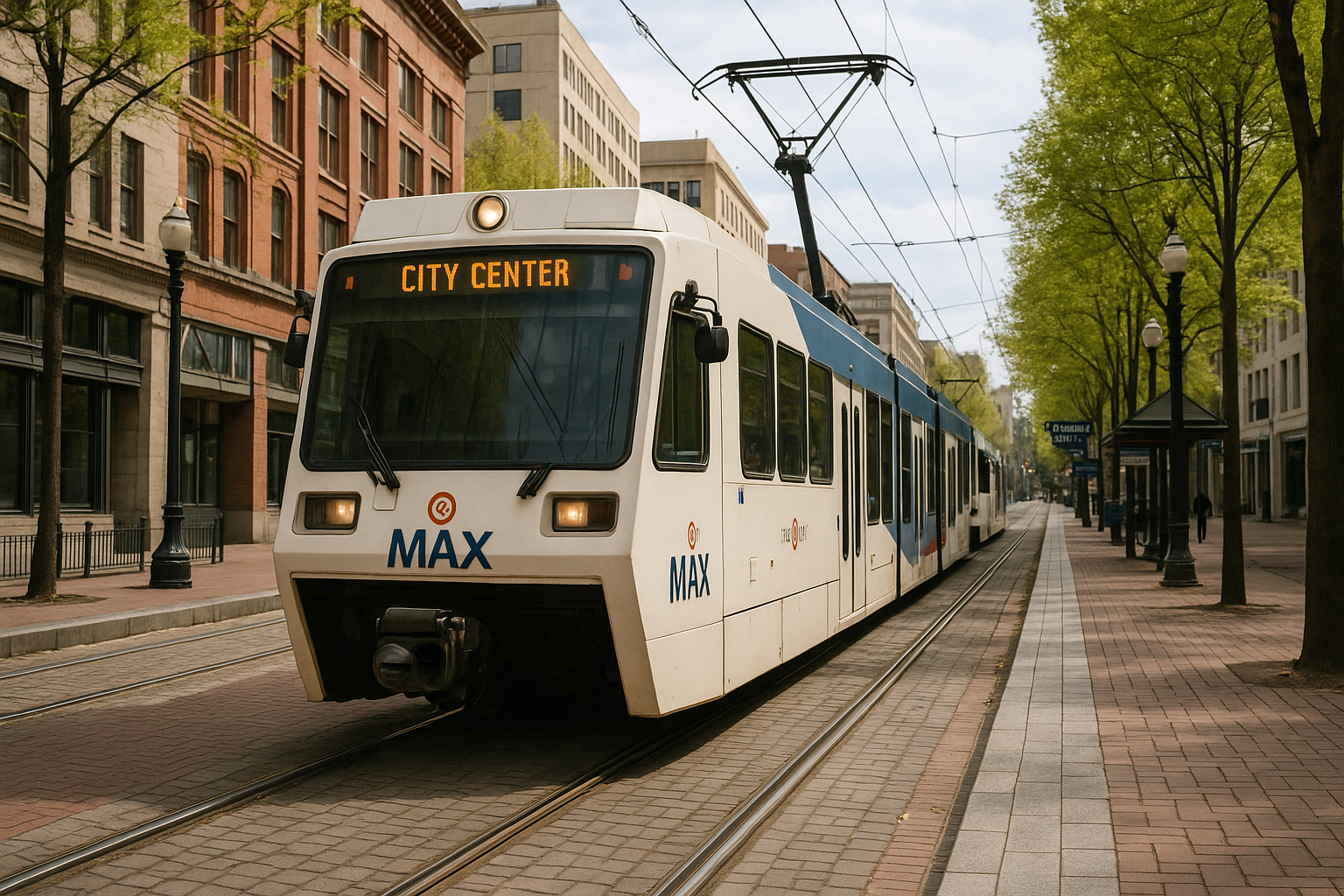MAX Light Rail: Serving Portland, OR
Published: July 2, 2025
By: Adam Burns
The MAX Light Rail system, serving the greater Portland, Oregon area, stands as a testament to efficient and accessible public transportation. Since its inception, MAX (Metropolitan Area Express) has not only alleviated congestion but also fostered sustainable urban development. This overview will explore the history, infrastructure, operations, and impact of the MAX Light Rail system.
History and Development
The concept of a light rail system in Portland emerged during the 1970s, amid growing concerns about urban sprawl and traffic congestion. The city's planners, in collaboration with state and federal agencies, identified light rail as a viable solution.
This initiative culminated in the groundbreaking of the first MAX line, the Eastside Blue Line, in 1982. By 1986, the line was operational, connecting downtown Portland to Gresham.
Expansion continued with the Red Line in 2001, offering service to Portland International Airport. This was followed by the Green Line in 2009, extending the network south to Clackamas, and the Orange Line in 2015, further enhancing connectivity. Today, the MAX system encompasses over 60 miles of track and 97 stations, serving a population accustomed to public transit.
Infrastructure
The system consists of five lines distinguished by colors: Blue, Green, Red, Orange, and Yellow. These lines traverse diverse landscapes, from urban centers to suburban neighborhoods, ensuring broad accessibility. The infrastructure includes at-grade tracks, bridges, tunnels, and park-and-ride facilities designed to streamline commuter access.
One notable engineering achievement is the Tilikum Crossing, a bridge exclusively for bikes, pedestrians, buses, streetcars, and MAX trains. This bridge symbolizes Portland's commitment to sustainable transportation.
Stations vary in size and facilities but often feature creatively designed shelters, bicycle racks, and accessibility options such as elevators and ramps. Real-time display boards and ticket vending machines enhance commuter convenience, while stations in downtown core are strategically placed to facilitate seamless transfers between lines.
Operations
TriMet, the public transit authority managing MAX, orchestrates a schedule with frequency adjusted according to demand. During peak hours, trains run every 15 minutes or less, with service decreasing in frequency late at night. The system operates daily, with service beginning in the early hours and extending until midnight or later, depending on the line.
The integration of a unified ticketing system with buses enhances the commuter experience. Riders use the Hop Fastpass, a contactless payment card, or mobile app to pay fares conveniently. This system also offers discounted fares for low-income riders, seniors, and students, fostering inclusivity.
TriMet continually updates its fleet to prioritize accessibility and comfort, featuring low floors, dedicated wheelchair spaces, and strobe lights for the hearing-impaired. The organization also invests in technology to improve system efficiency and safety, including CCTV surveillance and a dedicated operations center monitoring real-time conditions.
Impact on the Community
Portland's MAX Light Rail plays a critical role in shaping the city's urban landscape and lifestyle. Environmentally, it reduces reliance on automobiles, diminishing air pollution and greenhouse gas emissions. This commitment aligns with Portland's broader sustainability goals, contributing to its recognition as a green city.
Economically, MAX spurs transit-oriented development, attracting businesses and housing projects near stations. This accessibility increases property values, supports local businesses, and ultimately enhances Portland’s economic vitality.
For residents, MAX offers an affordable and reliable alternative to driving. Commuters can avoid the stresses of traffic and parking, enjoying instead a comfortable ride suitable for reading or work. The system also connects neighborhoods and acts as a social equalizer, providing mobility to those without private vehicles.
Challenges and Future Prospects
Despite its successes, MAX Light Rail faces challenges, including funding constraints and maintenance demands. Aging infrastructure requires ongoing investment to maintain safety and reliability. Additionally, community concerns regarding security necessitate continued focus on safety initiatives.
Looking ahead, Portland seeks to expand its light rail network further, with projects like the Southwest Corridor Plan under consideration. This expansion aims to improve connectivity to underserved areas, ensuring equitable access across the region. Technological innovations, such as real-time, data-driven service adjustments and energy-efficient models, are also on the horizon.
Overview
The MAX Light Rail system exemplifies Portland's commitment to creating a sustainable, connected, and accessible urban environment. While challenges persist, the system's continued development promises to enhance the region's quality of life and economic resilience. As a model of successful public transit, MAX stands as an inspiration for cities worldwide seeking to adapt to the demands of modern urban living.

